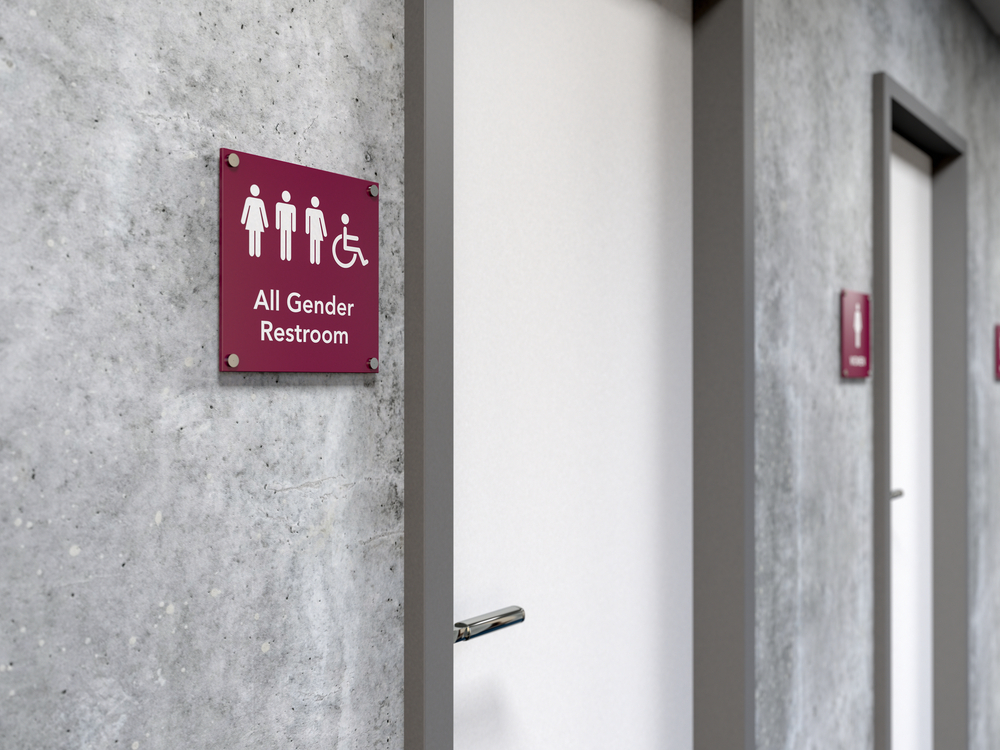The dynamic of mental health and recovery housing has changed in recent years, fostering inclusivity and diversity within residential communities. As societal understandings of gender continue to evolve, so do the expectations surrounding housing accommodation. Research shows that diversity and inclusion are the next frontier of mental health recovery.
Gender-inclusive housing options help take the stress off of individuals who are recovering from addiction, overcoming mental health disorders, and are on a path of self-discovery. Let’s explore what gender-inclusive housing is, why it is beneficial, and what you can expect when entering a program that encompasses diversity and inclusivity.
What is Gender-Inclusive Housing?
Gender-inclusive housing refers to residential spaces that are designed to accommodate individuals regardless of their gender identity or expression. Unlike traditional housing models that often segregate occupants based on binary gender classifications, gender-inclusive housing aims to create environments where individuals feel respected, safe, and included regardless of how they identify.
This approach recognizes the diverse spectrum of gender identities beyond just male and female, including non-binary, genderqueer, transgender, and other identities. By offering housing options that are not contingent on gender, institutions promote a more inclusive and supportive living experience for all residents and align with gender-affirming care.

The Role of Gender-Inclusive Housing in Mental Health and Recovery
Gender-inclusive housing isn’t merely about providing a roof over one’s head; it plays a pivotal role in fostering mental health and aiding addiction recovery. Gender-inclusive housing environments contribute to the well-being and recovery journey of individuals grappling with mental health challenges and addiction. By breaking down traditional gender classifications, individuals can get treatment and healing without stereotypes.
Providing Safe and Supportive Environments
One of the primary benefits of gender-inclusive housing in mental health and addiction recovery is the creation of safe and supportive environments. Traditional housing models often fail to address the unique needs of individuals with diverse gender identities, leading to feelings of isolation, discrimination, and vulnerability. Gender-inclusive housing, on the other hand, acknowledges and respects the identities of all residents, thereby mitigating the risk of stigma and promoting a sense of belonging.
Reducing Stigma and Isolation
Stigma surrounding mental health and addiction can exacerbate feelings of isolation and shame, hindering individuals from seeking help or engaging in treatment. Gender-inclusive housing environments prioritize inclusivity and acceptance, creating spaces where residents feel comfortable expressing their thoughts and emotions without fear of judgment. This reduction in stigma can encourage individuals to seek support, connect with peers, and actively participate in their recovery journey.
Cultivating Peer Support Networks
Peer support plays a crucial role in mental health recovery and addiction treatment. Gender-inclusive housing environments provide opportunities for residents to connect with peers who share similar experiences and challenges. These peer support networks offer invaluable emotional support, encouragement, and guidance, empowering individuals to navigate their recovery journey with resilience and determination.
Addressing Trauma and Co-occurring Disorders
Many individuals struggling with mental health issues or addiction have experienced trauma or have co-occurring disorders that require specialized care and support. Gender-inclusive housing environments recognize the interconnectedness of mental health, addiction, and trauma, providing holistic services and resources to address the multifaceted needs of residents.

What to Expect from Gender-Inclusive Housing
Gender-inclusive housing arrangements can take various forms, depending on the specific institution or housing provider. Common features of gender-inclusive housing may include:
- Gender-Neutral Bathrooms: These facilities are designed to be accessible to individuals of all gender identities, often featuring private stalls and shared sinks.
- Mixed-Gender Room Assignments: Instead of assigning roommates based on gender, residents may have the option to request roommates regardless of gender identity.
- Gender-Inclusive Communities: Some residential communities may be designated as gender-inclusive, fostering an environment where residents can live and interact with individuals of diverse gender identities.
- Training and Support: Housing staff are typically trained to provide support and resources to residents regarding gender identity issues, ensuring a supportive living environment for all.
What to Look for in Gender-Inclusive Housing
Gender-inclusive housing offers a range of benefits for residents and communities. Here are eight things to consider when determining if gender-inclusive housing is right for your mental health and recovery journey:
- Promotes Inclusivity: By accommodating individuals of all gender identities, gender-inclusive housing promotes a culture of inclusivity and acceptance within residential communities.
- Enhances Safety and Well-being: For transgender and non-binary individuals, gender-inclusive housing provides a safer and more affirming living environment, reducing the risk of discrimination or harassment.
- Supports Academic Success: Research has shown that students who feel safe and supported in their living environments are more likely to thrive academically. Gender-inclusive housing contributes to a positive campus climate, thereby supporting students’ academic success.
- Prepares for Real-World Diversity: In an increasingly diverse society, exposure to gender-inclusive environments prepares individuals to navigate diverse workplaces and communities with empathy and understanding.
- Institutional Commitment: Look for institutions or housing providers that demonstrate a clear commitment to inclusivity and equity through their policies and practices.
- Community Support: Assess whether the residential community fosters a supportive and inclusive atmosphere for residents of all gender identities.
- Facility Accessibility: Ensure that the housing facilities are accessible and accommodating to individuals of diverse gender identities, including the availability of gender-neutral bathrooms and other amenities.
- Staff Training: Inquire about the training provided to housing staff regarding gender identity issues and their ability to support residents effectively.
Gender-Inclusive Housing at Riviera Recovery
Gender-inclusive housing represents a significant step towards creating more equitable and inclusive living environments for individuals of all gender identities. Riviera Recovery is committed to providing gender-affirming care – including gender-inclusive housing.If you or a loved one are considering options for mental health or addiction recovery, Riviera Recovery can help. Our gender-affirming care and gender-inclusive housing provide support for everyone, making it possible for recovery without limitations. Call us today to learn more about how our programs can help – regardless of how you identify.


